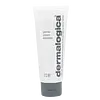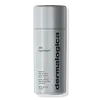What's inside
What's inside
 Key Ingredients
Key Ingredients

 Benefits
Benefits

 Concerns
Concerns

 Ingredients Side-by-side
Ingredients Side-by-side

Water
Skin ConditioningDiatomaceous Earth
AbrasiveButylene Glycol
HumectantC12-15 Alkyl Benzoate
AntimicrobialPrunus Armeniaca Kernel Oil
MaskingPapain
Skin ConditioningBromelain
Skin ConditioningSteareth-21
CleansingSteareth-2
EmulsifyingCetearyl Alcohol
EmollientSalicylic Acid
MaskingSodium Magnesium Silicate
Lactic Acid
BufferingAloe Barbadensis Leaf Extract
EmollientCentaurea Cyanus Flower Extract
AstringentCitrus Medica Limonum Fruit Extract
Skin ConditioningCitrus Aurantium Dulcis Flower Extract
Skin ConditioningChamomilla Recutita Flower Extract
MaskingPolysorbate 80
EmulsifyingDisodium EDTA
Benzyl PCA
HumectantPhenoxyethanol
PreservativeLinalool
PerfumingLavandula Angustifolia Oil
MaskingCI 77891
Cosmetic ColorantWater, Diatomaceous Earth, Butylene Glycol, C12-15 Alkyl Benzoate, Prunus Armeniaca Kernel Oil, Papain, Bromelain, Steareth-21, Steareth-2, Cetearyl Alcohol, Salicylic Acid, Sodium Magnesium Silicate, Lactic Acid, Aloe Barbadensis Leaf Extract, Centaurea Cyanus Flower Extract, Citrus Medica Limonum Fruit Extract, Citrus Aurantium Dulcis Flower Extract, Chamomilla Recutita Flower Extract, Polysorbate 80, Disodium EDTA, Benzyl PCA, Phenoxyethanol, Linalool, Lavandula Angustifolia Oil, CI 77891
Microcrystalline Cellulose
AbsorbentSodium Bicarbonate
AbrasiveSodium Cocoyl Glutamate
CleansingSodium Myristoyl Glutamate
CleansingMalic Acid
BufferingSodium Methyl Cocoyl Taurate
CleansingCharcoal Powder
AbrasiveVinyl Dimethicone/Methicone Silsesquioxane Crosspolymer
Maltodextrin
AbsorbentSilica
AbrasiveMagnesium Oxide
AbsorbentOryza Sativa Bran Extract
Skin ConditioningPolymethylsilsesquioxane
Sapindus Trifoliatus Fruit Extract
Skin ConditioningNiacinamide
SmoothingCitrus Aurantium Amara Peel Oil
Skin ConditioningZingiber Officinale Root Extract
MaskingLavandula Angustifolia Oil
MaskingLavandula Hybrida Oil
EmollientCamellia Sinensis Leaf
PerfumingKappaphycus Alvarezii Extract
Skin ConditioningCaesalpinia Spinosa Fruit Pod Extract
Citrus Limon Peel Oil
MaskingRosmarinus Officinalis Leaf Oil
MaskingSalvia Officinalis Oil
MaskingSubtilisin
Skin ConditioningLipase
Skin ConditioningPapain
Skin ConditioningLactic Acid
BufferingOryza Sativa Starch
AbsorbentSodium Chloride
MaskingSodium Dehydroacetate
PreservativeXanthan Gum
EmulsifyingWater
Skin ConditioningCoconut Acid
CleansingCalcium Lactate
AstringentCapryloyl Glycine
CleansingUndecylenoyl Glycine
CleansingCetrimonium Chloride
AntimicrobialLimonene
PerfumingLinalool
PerfumingMicrocrystalline Cellulose, Sodium Bicarbonate, Sodium Cocoyl Glutamate, Sodium Myristoyl Glutamate, Malic Acid, Sodium Methyl Cocoyl Taurate, Charcoal Powder, Vinyl Dimethicone/Methicone Silsesquioxane Crosspolymer, Maltodextrin, Silica, Magnesium Oxide, Oryza Sativa Bran Extract, Polymethylsilsesquioxane, Sapindus Trifoliatus Fruit Extract, Niacinamide, Citrus Aurantium Amara Peel Oil, Zingiber Officinale Root Extract, Lavandula Angustifolia Oil, Lavandula Hybrida Oil, Camellia Sinensis Leaf, Kappaphycus Alvarezii Extract, Caesalpinia Spinosa Fruit Pod Extract, Citrus Limon Peel Oil, Rosmarinus Officinalis Leaf Oil, Salvia Officinalis Oil, Subtilisin, Lipase, Papain, Lactic Acid, Oryza Sativa Starch, Sodium Chloride, Sodium Dehydroacetate, Xanthan Gum, Water, Coconut Acid, Calcium Lactate, Capryloyl Glycine, Undecylenoyl Glycine, Cetrimonium Chloride, Limonene, Linalool
 Reviews
Reviews

Alternatives
Ingredients Explained
These ingredients are found in both products.
Ingredients higher up in an ingredient list are typically present in a larger amount.
Lactic Acid is another well-loved alpha hydroxy acid (AHA). It is gentler than glycolic acid but still highly effective.
Its main role is to exfoliate the surface of the skin by loosening the “glue” that holds dead skin cells together. Shedding those old cells leads to smoother, softer, and more even-toned skin.
Because lactic acid molecules are larger than glycolic acid, they don’t penetrate as deeply. This means they’re less likely to sting or irritate, making it a great choice for beginners or those with sensitive skin.
Like glycolic acid, it can:
Lactic acid also acts as a humectant (like hyaluronic acid). It can draw water into the skin to improve hydration and also plays a role in the skin's natural moisturizing factor (NMF) in the form of sodium lactate.
Studies show it can boost ceramide production to strengthen the skin barrier and even help balance the skin’s microbiome.
To get results, choose products with a pH between 3-4.
Lower strengths (5-12%) focus on surface exfoliation; higher strengths (12% and up) can reach deeper in the dermis (deeper, supportive layer) to improve skin texture and firmness over time.
Though it was originally derived from milk, most modern lactic acid used in skincare is vegan. It is made through non-dairy fermentation to create a bio-identical and stable form suitable for all formulations.
When lactic acid shows up near the end of an ingredient list, it usually means the brand added just a tiny amount to adjust the product’s pH.
Legend has it that Cleopatra used to bathe in sour milk to help reduce wrinkles.
Lactic acid is truly a gentle multitasker: it exfoliates, hydrates, strengthens, and brightens. It's a great ingredient for giving your skin a smooth, glowing, and healthy look without the harshness of stronger acids.
Read more about some other popular AHA's here:
Learn more about Lactic AcidLavandula Angustifolia Oil is more commonly known as lavender essential oil. It is considered a fragrancing ingredient.
Lavender imparts a famous scent. While the smell is lovely, this ingredient and may sensitize skin in topical products. This is because about 85% of the oil is made up of linalool and linalyl acetate.
When exposed to air, these two compounds become strong allergens. This ingredient exhibits cytotoxicity at low concentrations; amounts of 0.25% have been shown to damage skin cells.
A study from Japan found this ingredient caused lavender sensitivity after widespread exposure.
Lavender essential oil has some antimicrobial, antibacterial, and anti-inflammatory properties. However, the cons of this ingredient may outweight the pros.
More research is needed to confirm lavender essential oil's effects when used in aromatherapy.
Lavandula Angustifolia is known as the English Lavender and famous for creating purple fields in Provence, France.
Learn more about Lavandula Angustifolia OilLinalool is a fragrance and helps add scent to products. It's derived from common plants such as cinnamon, mint, citrus, and lavender.
Like Limonene, this ingredient oxidizes when exposed to air. Oxidized linalool can cause allergies and skin sensitivity.
This ingredient has a scent that is floral, spicy tropical, and citrus-like.
Learn more about LinaloolPapain is an enzyme found naturally in the papaya plant's leaves, fruit, and roots. It has antimicrobial, soothing, and wound healing properties.
Glycine and Vitamin A are naturally found in papain.
While papain is often touted as skin-lightening, further studies are needed to prove this. However, papain has been shown to help soothe acne-inflammation.
Papain belongs to a class of enzymes called proteolytic enzymes. These enzymes break down peptides and amino acids.
Some studies found papain to be a potential skin sensitizer and allergen. Those with latex allergies might also be allergic to papaya.
Learn more about PapainWater. It's the most common cosmetic ingredient of all. You'll usually see it at the top of ingredient lists, meaning that it makes up the largest part of the product.
So why is it so popular? Water most often acts as a solvent - this means that it helps dissolve other ingredients into the formulation.
You'll also recognize water as that liquid we all need to stay alive. If you see this, drink a glass of water. Stay hydrated!
Learn more about Water